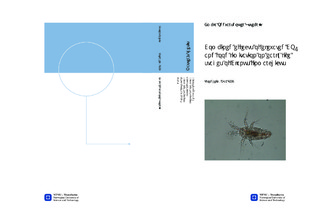Combined effects of elevated CO2 and food limitation on early life stages of Clanus finmarchicus
Master thesis
Permanent lenke
http://hdl.handle.net/11250/238832Utgivelsesdato
2014Metadata
Vis full innførselSamlinger
- Institutt for marin teknikk [3429]
Sammendrag
The early life stages of Calanus finmarchicus were exposed to two levels of pCO2, 380 ppm (control) and 2080 ppm (elevated CO2) and two different food concentrations, ~ 600 µg C/L (high food concentration) and ~150 µg C/L (food limited). Carbon and nitrogen analysis were performed at the first feeding stage (nauplii stage 3), and the last nauplii stage before moulting to copepodit (nauplii stage 6). The elevated CO2 and food limitation had a significant negative additive effect, when combined, on carbon and nitrogen content on nauplii stage 3. In nauplii stage 6, elevated CO2 had no significant effect, but food limitation had a strong negative effect on both carbon and nitrogen content, indicating that food limitation may over masks the effects of elevated CO2 in the later exogenous feeding stages. The C:N ratio was not significant effected by either elevated CO2 nor food limitation. Nauplii that received high food concentration and elevated CO2 combined were not significantly different in carbon and nitrogen content compared to nauplii in the control treatment (high food concentration, 380 ppm), indicating that C. finmarchicus may be able to compensate for higher energy demand due to elevated CO2, by increasing the feeding rate. The hatching success and the naupliiar survival were not affected by either elevated CO2 or food limitation. Results in the present study support previous findings that C. finmarchicus may be relative robust to direct effect of elevated CO2 predicted in the medium-term future (2000 ppm), but changes in food availability or food quality, due to ocean acidification and increasing temperatures, can have large effect on carbon and nitrogen content in C. finmarchicus nauplii
